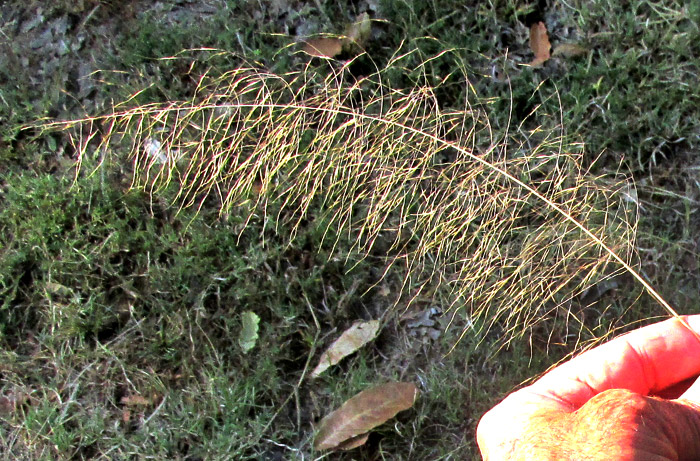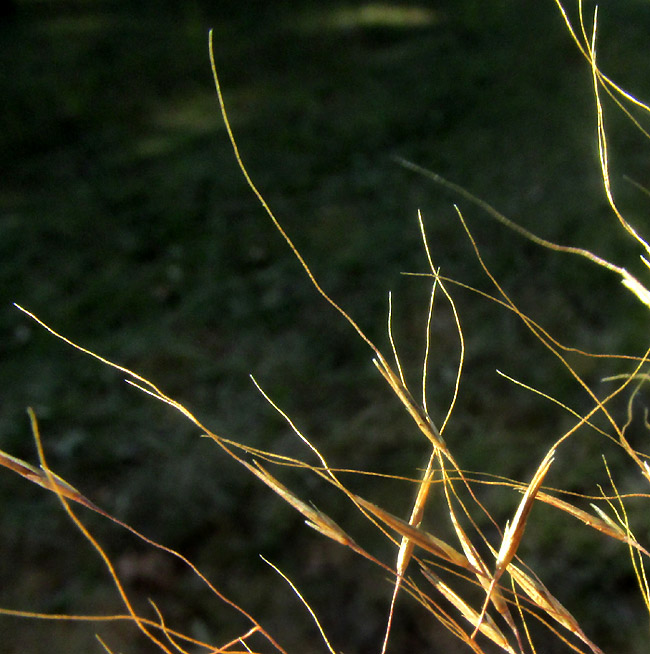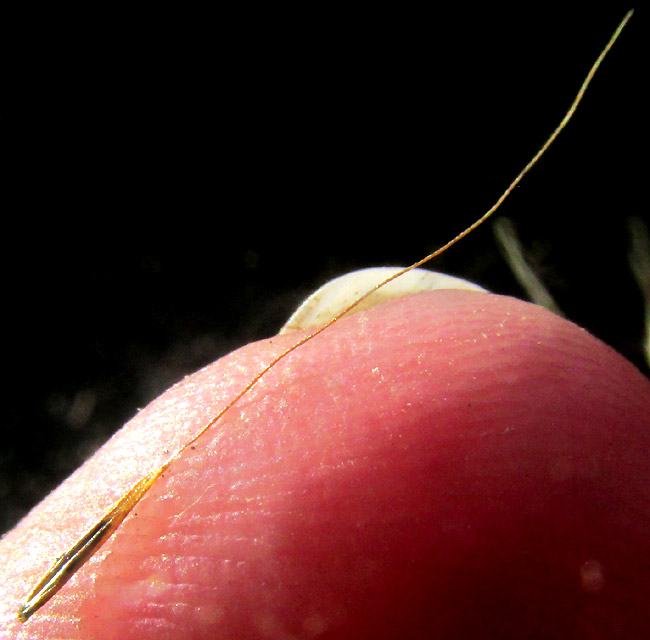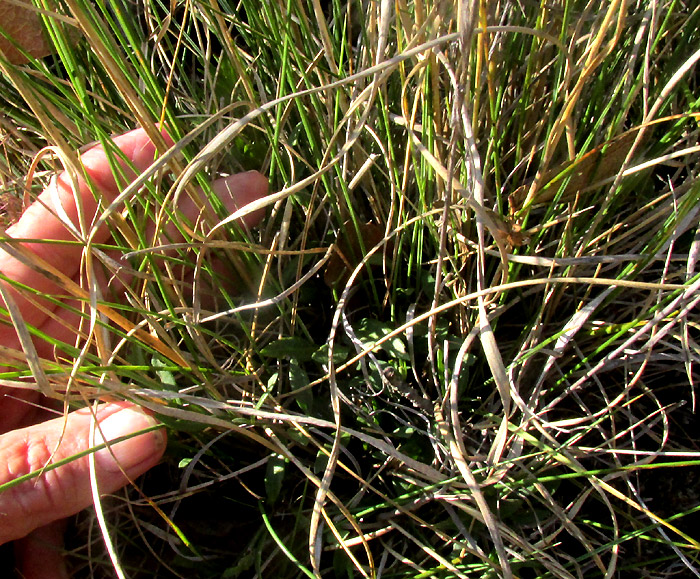Excerpts from Jim Conrad's
Naturalist Newsletter
Entry dated November 9, 2023, from notes taken near Cascadas de La Piedad waterfall 3kms NW of the community of San Pablo, municipality of Almeaco de Bonfil; beside canyon of La Piedad; N20.1017°, W100.0041°, elevation 2360 meters (7750ft); extreme southern Querétaro state, MÉXICO
NEEDLEGRASS

On a steep, grassy slope at the canyon's rim, the above waist-high clumpgrass glowed in early morning sunlight. Its large, diffuse inflorescences responded to the merest breeze; they were the only moving feature of the landscape.

The inflorescences were unusual because of their combination of being long but narrow, and very diffuse.

As seen above, the spikelets also were distinctive, each spikelet bearing only one floret, which was so slender that it resembled a continuation of the long, hairlike pedicel bearing it. Each floret bore a long, needlelike bristle, or awn, which similarly seemed to be a continuation of the whole structure.

The grass was mature, in the process of disseminating its one-seeded, caryopsis-type fruit. When a caryopsis was released, it left behind the scale-like glumes which had subtended it. The empty glumes surely contributed to the inflorescence's graceful compliance with the wind, possibly helping with dissemination. Later, a feature seen above which proved important for identification to species level was the relative length of the awn to the lemma bearing it. Finally, here's what the grass's clumping, erosion-controlling base and slender lower leaves looked like:

Many years ago I learned that grasses whose spikelets bore single, slender florets, the lemmas of which were tipped with long, needle-like awns, probably was one of numerous species known as needlegrasses, genus Stipa. Looking into the Flora fanerogámica del Valle de México, published in 2005 and considering maybe 90% or more of the flowering species occurring in this part of mountainous southern Querétaro state, our grass was identified as Stipa eminens.
However, the online Flora of North America considers that name as a synonym of Achnatherum eminens. But Kew's Plants of the World Online database currently lists Achnatherum eminens as a synonym of Pseudoeriocoma eminens. Atop all that, at this time the GBIF database has deleted its Pseudoeriocoma eminens page, while providing an active Achnatherum eminens page. Who knows what our plant should be called? Since we usually use Kew's database, nostalgically remembering the comfortable, old, easy to remember, catch-all Stipa name -- created by Linnaeus himself in 1753 -- we'll call it PSEUDOERIOCOMA EMINENS.
In the US, Pseudoeriocoma eminens is known as Southwestern Needlegrass. However, the species is more Mexican than US and down here the species is more northern and central than southwestern.
Whatever our grass is called, it's native to mountainous, dry, rocky slopes and valleys from the southwestern US south through Mexico into Oaxaca state.
I find no information about this grass's human uses or even its ecological value, though at least one paper describes its as "palatable." Whenever there's a list of species present in not-overgrazed grasslands of the upland southern US and Mexico north of Oaxaca, it's on the list.
As a clumpgrass inhabiting a steep slope, it's clear that the species retards erosion and its dying leaves enrich the soil with organic matter. Also, pictures on the Internet often look like our top picture, emphasizing the graceful charm of its diffuse inflorescences bending with the wind, glowing in the sunlight. On some higher Universal level, surely that's worth something.